Eight remarkable tales of the Empress of Blues
Scotland’s national poet Jackie Kay made an unlikely friend when she was 12 years old. But this wasn’t someone she sat with at school. In fact, it was a woman she had never met – the legendary blues singer Bessie Smith.
Jackie’s first introduction to Bessie came in the form of a record she was gifted by her father. She fell in love with the stories Bessie told through her songs.
In Radio 4's Bessie Smith, it’s Jackie’s turn to do the storytelling, as she narrates the tempestuous tales of "the greatest blues singer in the world". Here are eight fascinating tales from the life of the Empress of Blues.
Bessie Smith by Jackie Kay
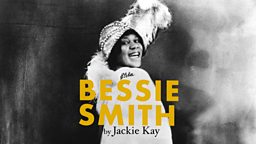
Mixing biography, fiction, music and memoir, in Bessie Smith, Scotland's Makar, Jackie Kay, remembers the electric thrill of identification when, as a young black girl growing up in Glasgow, the music of the Empress of Blues came into her life.
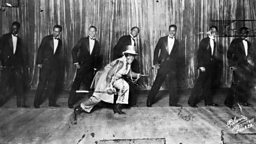
1. Bessie learnt from Ma Rainey, Mother of the Blues
Bessie Smith was born in Chattanooga, Tennessee, in 1894. At a time when racial segregation was enforced through the Jim Crow laws, growing up as a black woman in the US south was difficult and dangerous. Employment opportunities for black people were severely limited, amounting pretty much to a choice between manual or domestic labour, or joining a travelling show.
Bessie was one of eight children, and before her 10th birthday, both her parents and two of her siblings had died. As a result, the children had to earn their own money, and so at just nine years of age, Bessie began busking for nickels on the streets of Chattanooga, accompanied by her brother Andrew on the guitar. In her late teens, she joined her brother Clarence in the Moses Stokes travelling show, taking her out of Chattanooga and into the wide world.
Through her work in travelling shows, Bessie became acquainted with Ma Rainey, Mother of the Blues. Though Ma didn’t teach Bessie to sing, she almost certainly influenced her performance skills. Legend has it that Ma kidnapped Bessie to take her on the road, a story they enjoyed recounting to each other over the years.
2. Bessie Smith was openly bisexual
Ma Rainey was a lesbian, and her openness about this may have enabled Bessie to feel more comfortable in exploring her own bisexuality. She first married Earl Love, then Jack Gee, and entered into a common law marriage with Richard Morgan, with whom she remained until her death. But many of her sexual partners were women. She had a long-term companion and confidante, Ruby, who helped cover for her affairs, though there is no evidence the pair engaged in a romantic relationship. Bessie took Ruby on the road with her, teaching her moves so that she could be part of the show as an interval performer.
3. Bessie had an astonishing memory
Bessie did not have a great level of literacy – understandably, when you think that her childhood was spent singing on the streets of her hometown. Because she couldn’t rely on writing her lyrics down, Bessie committed all 160 of the songs she recorded to memory.
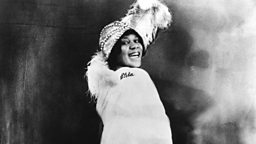
4. Bessie had her own tour train
Bessie’s first record, Downhearted Blues, was a whirlwind success, selling three quarters of a million records in its first six months. Yet it didn’t matter how prolific she was – Bessie, like all black people subject to Jim Crow laws at the time, was prohibited from staying in any hotel other than lowly B&Bs. Bessie’s brother Clarence came up with a solution for this. Before the days of taking elaborate buses and trucks on tour, Bessie had something a little more unique to transport her and her entourage – a private railroad car. Such success afforded her this luxury mode of transport. Her train was custom made, and painted bright yellow, so it was always obvious when Bessie was in town. The 78-foot-long contraption had numerous state rooms, a bathroom with its own hot running water, a kitchen in which Bessie would cook stews for everyone, and capacity to house her whole crew, so they didn’t need the hotels from which they were forbidden.
5. Bessie’s husband was shot on their first date
In what may have been an omen for the tempestuous relationship to come, the man who would become Bessie’s second husband, Jack Gee, was shot on their first date. His injuries were life-threatening, and for weeks Bessie visited him in hospital.
While neither party were faithful in the relationship, Bessie obsessively tried to make Jack happy. At the start of their relationship, he pawned his watch to buy her a red dress to mark her first recording date of Downhearted Blues.
As her career went from strength to strength, she lavished him with flashy gifts. She was cruelly mistreated by Jack – he abused her with severe beatings and stole her money to fund the career of his mistress, Gertrude Saunders. This was the final straw for their relationship.
As if to bring the violent circumstances of their relationship full circle, it is said that Bessie once fired a gun at Jack from a moving train.
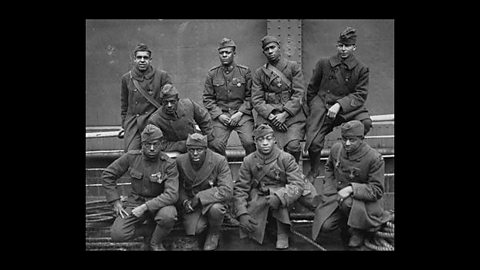
What did the Blues have to do with WWI?
Helen Castor meets Dr Michael Hammond to hear about Blues in the Trenches.
6. Bessie’s son was kidnapped
The funding of Gertrude Saunders’s career wasn’t even Jack Gee’s cruellest move – he also kidnapped their son, Jack Gee Junior. She met the child on tour, and his mother was the niece of one of her chorus girls. The couple adopted him and brought him to Philadelphia when he was six years old. To ensure he was always cared for, she bought neighbouring houses and moved her sisters and their families in, so that they could look after Jack Gee Junior while she was touring. Her son brought her great joy, giving her purpose in life beyond her work.
When their marriage broke down, Jack Gee kidnapped their son and placed him in care. When the boy escaped, he was returned to his birth father, where he had to carry out domestic work and sleep in the basement. Jack Gee Junior was left impoverished and forgotten.
When Jack left Bessie, he took her companion Ruby with him too. Ruby feared Jack and claimed he forced her to join him. Bessie never recovered from these betrayals.
7. Bessie once bailed Ma Rainey out of prison
Bessie was generous with her money, not only buying houses for her family and cars for her husband, but also covering medical costs for her friends, and even bail money. Once, Ma Rainey was arrested in the middle of a lesbian orgy at her home in Harlem, after the other participants fled, semi-clothed in whatever they could grab, from a back door. Ma tried to follow them, but she was caught after falling down the stairs and thrown in gaol for hosting an "indecent party". Bessie, no stranger to such gatherings, bailed Ma out the following morning.
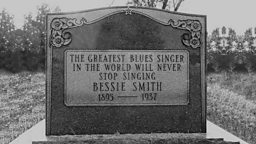
8. Bessie's grave was initially unmarked
Despite Bessie’s many acts of immense generosity, she was not similarly repaid. In 1937, she died in hospital following a tragic car accident. Her partner Richard Morgan was at the wheel. Richard accompanied her body on the train to Philadelphia to meet her brother Clarence, and later some 10,000 mourners filed past to see her laid out. On her death, Jack Gee claimed that the two of them were still close, and took her money and the royalties from her songs. Neither her adopted son, nor her common-law husband Richard Morgan received anything.
Bessie was buried in a silk gown, which Jack claimed he bought, but her family maintained that her life insurance pay out funded her final outfit. It was this life insurance that also covered the costs of her funeral and a pink velvet-lined, gold-trimmed coffin. Jack didn’t even use Bessie’s money to provide her with a headstone, and so she was left buried in an unmarked grave.
In 1970, decades after her death, Columbia, her record label, reissued all of her work on five double albums. Bessie’s re-emergence into the public eye led to a black Philadelphia housewife to contact the Philadelphia Inquirer’s Actionline, questioning Bessie’s unmarked grave. In two calls, the money was raised to fund Bessie’s headstone: one donation was from Juanita Green, the daughter of Bessie’s cleaner, who grew up to become a prominent civil rights activist; the other donor was Janis Joplin. Her headstone read: "The greatest blues singer in the world will never stop singing."

-
![]()
The Poet Laureate Has Gone to His Shed... with Jackie Kay
Jackie Kay, who first shared a stage with Simon Armitage 30 years ago on the New Generation poetry tour reminisces about those first readings as well a sharing their current experiences of holding the highest positions in poetry – Jackie as the Scottish Makar and Simon as the Poet Laureate.

More absorbing listening on Radio 4
-
![]()
The House I Grew Up In – Jackie Kay
Recalling a childhood in Glasgow which inspired her to write, the poet takes Wendy Robbins to meet her mum and dad.
-
![]()
Soul Music – Strange Fruit
An examination of harrowing stories from the American South behind 'Strange Fruit', made famous by Billie Holiday.
-
![]()
Why Sam Cooke's "A Change Is Gonna Come" became a Civil Rights anthem
Professor Mary King describes how the 1964 record became a symbol of hope.
-
![]()
Black Music in Europe: A Hidden History
Clarke Peters explores the music of black Europe at the time of the First World War, uncluding music by captured African prisoners of war.





